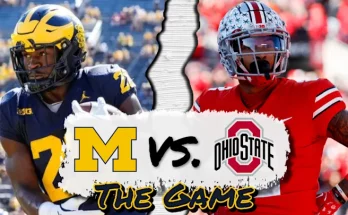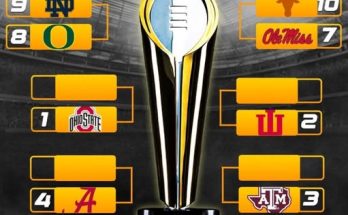When Sports Illustrated released its annual list of the 50 Most Influential People in Sports, the name that caught everyone off guard and simultaneously made perfect sense was Cooper Flagg. For years, the conversation about basketball’s next generational talent has been buzzing, but the confirmation of his placement on such a prestigious ranking changed the nature of the dialogue. It was no longer just about scouting reports, high school mixtapes, or college commitment speculation—it was about influence, power, and the shaping of sports culture in real time. Flagg’s exact ranking on SI’s list was at number 17, a spot nestled among billion-dollar franchise owners, championship coaches, global superstars, and tech innovators redefining fan engagement. The fact that a teenager, barely old enough to drive just a few years ago, could already rank ahead of long-established names underscores why his influence has become a phenomenon worth analyzing. But what makes this ranking so significant is not just the number attached to his name; it is the layered meaning behind how a young player from Maine has become a cornerstone in conversations about the future of basketball and, by extension, the broader culture of sports.
The first element to unpack is visibility. Sports Illustrated does not simply throw together this list to celebrate on-court excellence; the criteria extend far beyond athletic ability. Influence is measured by reach, by how much a person shifts narratives, by how they inspire copycats, set agendas, and impact the flow of money and attention. For Cooper Flagg to land at 17, higher than some of the most accomplished active players in the NBA, demonstrates that his aura extends beyond highlight reels. His games are streamed in record numbers for high school competition, his presence at summer events generates social media engagement rivaling All-Star Weekend, and his commitment to Duke sparked national headlines on par with coaching changes in the NBA. In short, Flagg is not just a prospect—he is a gravitational force around whom conversations orbit.
Secondly, the ranking is symbolic of the generational transition currently sweeping basketball. For two decades, the conversation of influence has revolved around established icons such as LeBron James, Stephen Curry, and Kevin Durant. While those players still wield immense cultural weight, Flagg’s presence in the top 20 signals the appetite for the next wave. Fans, brands, and media outlets are not waiting for him to log his first NBA minutes before treating him like a global figure. They are projecting forward, investing emotionally and financially into the idea that Flagg is not only destined to be great but destined to reshape what greatness looks like. This predictive influence is rare. Few athletes have commanded it. LeBron did as a teenager at St. Vincent-St. Mary. Zion Williamson briefly carried it with his high school dunks that flooded the internet. But Cooper Flagg’s ranking cements him in that rarified group of prodigies whose careers are treated as inevitable history in motion rather than uncertain journeys.
Another layer of importance in Flagg’s placement is what it reveals about the democratization of influence in the social media era. A generation ago, high school phenoms could be local legends with occasional national recognition, but now they are global brands before graduation. Flagg’s every move is documented, dissected, and amplified. His workouts trend, his interviews become viral clips, and his family story has been retold in countless profiles. The SI list acknowledges that influence is no longer confined to those with professional résumés—it belongs also to those who dominate discourse and anticipation. The 17th ranking is thus not just a nod to his skill but a recognition of his ability to command collective attention in an age where attention is currency.
This ranking also matters because of the message it sends to institutions within sports. College programs, professional franchises, sneaker companies, and broadcasting networks are all watching these lists closely. A placement at number 17 is a signal flare. It tells marketers and decision-makers that Cooper Flagg is not a niche interest but a mainstream powerhouse. It justifies the investment in his storylines, the resources spent covering his games, and the early endorsement negotiations already being whispered about. For Duke University, which will be his next stop before the NBA, this ranking validates the anticipation that their upcoming season will be one of the most heavily watched and discussed in college basketball history. For NBA franchises, it confirms that drafting him will not only bring a potential superstar on the court but also a media juggernaut whose presence could transform the relevance of a struggling franchise overnight.
There is also a cultural undertone that makes this ranking significant. Flagg hails from Newport, Maine, a small town not typically associated with basketball hotbeds. His rise is a testament to the reach of grassroots basketball and the interconnected web of AAU circuits, elite showcases, and digital amplification that can take a player from rural anonymity to international fame. By ranking him at 17, SI is underscoring the idea that the modern sports landscape is borderless. You do not need to grow up in Los Angeles, Chicago, or New York to become the face of the game. You can emerge from Maine, carry the pride of a small town, and still be positioned as one of the most influential people in the entire world of sports.
Beyond the symbolism, there is a more practical implication of the ranking: pressure. Influence brings expectations, and expectations bring scrutiny. By placing Flagg this high, SI has essentially painted a target on his back. Every underwhelming performance will be magnified, every minor flaw dissected. Fans and critics alike will measure him not against his peers but against legends. The ranking creates a double-edged sword: it fuels his brand but also heightens the stakes of his journey. How he navigates this will determine not only the trajectory of his career but also whether he can sustain and expand the influence SI has already attributed to him.
What makes this even more fascinating is the timing. Flagg has not yet played a single game at the college level, let alone in the NBA. And yet, his ranking is higher than decorated champions, higher than coaches with decades of experience, and higher than executives who manage billion-dollar organizations. This juxtaposition highlights the power of potential. In sports, realized greatness is celebrated, but potential greatness can sometimes carry equal or greater weight because of its ability to stir imagination. Cooper Flagg embodies that imagination. He represents what fans crave: the idea of witnessing the rise of the next iconic figure from the ground up.
Another reason his placement matters is the broader discussion of influence across different sports. SI’s list is not basketball-exclusive. It includes NFL stars, soccer icons, tennis champions, and industry disruptors. For Flagg to emerge as one of the highest-ranked individuals under 20 in a cross-sport list indicates that his appeal transcends basketball. It places him in the same breath as global ambassadors of sport. It suggests that his eventual stardom could resonate beyond NBA arenas into fashion, philanthropy, media, and youth culture. That cross-disciplinary potential is exactly what companies, fans, and analysts see in him, and it explains why his placement has sparked conversations outside the basketball community.
The ranking is also an acknowledgment of his intangibles. Influence is not simply about talent; it is about charisma, relatability, and the ability to connect with audiences. Flagg has shown humility in interviews, a quiet confidence that resonates with fans, and a maturity beyond his years. These traits are as influential as his ability to block shots or sink three-pointers. They build the foundation for leadership and marketability. SI’s placement recognizes that influence is a composite of skill and persona, and in both categories Flagg already stands out.
Finally, the significance of his ranking lies in its long-term implications. If Flagg delivers on his potential, this 17th spot could be remembered as the beginning of a meteoric rise, the first step in a journey that sees him topping the list in years to come. If he struggles, the ranking could become a cautionary tale about the dangers of hype. Either way, its placement ensures that his career will be one of the most closely chronicled in modern sports history. It is a marker, a timestamp, capturing the exact moment when the basketball world decided that Cooper Flagg was not just another promising prospect but one of the most influential individuals shaping the game today.


